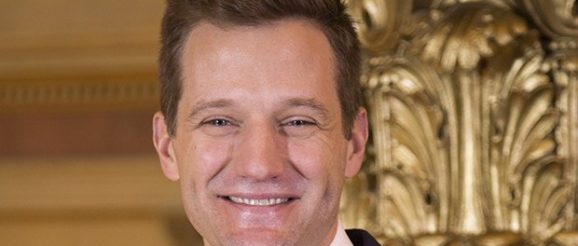Grove stresses innovation in workforce development – Finance & Commerce

Steve Grove believes one of the top things Minnesota needs to do to grow its economy is to embrace disruption. So it’s fitting that he’s started with the agency he oversees.
Grove, a former Google executive, was named commissioner of the Minnesota Department of Employment and Economic Development in January 2019 with the incoming administration of Gov. Tim Walz. At a meeting of the Minnesota Economic Club on Monday, he described some of the changes he’s overseen this year, ranging from updating the employee dress code to rethinking longstanding grant and incentive programs, as well as goals for the remainder of the administration.
“We’ve really had a reimagination of DEED’s culture internally,” Grove said, rattling off a list new managerial policies in place at the agency. “We’ve revamped our performance measurement and our upward feedback to create good communication with the managers and our staff. We’re developing professional development resources. We’re beginning to start an innovation lab for inside the government.”
In its first year, the Walz administration has launched several new economic initiatives, such as the Launch Minnesota partnership to support startups and entrepreneurs, and brought back several that had lapsed, including the angel tax credit and Border-to-Border grants for broadband internet.
But Grove said the state also is re-evaluating existing programs, such as the Minnesota Job Skills Partnership, Minnesota Investment Fund, and the Job Creation Fund, for ways to improve results.
“What if we tilted those incentive dollars, which are few and far between in Minnesota compared to other states, and push them towards businesses that are truly innovating and that are going to create jobs that are going to be here for a long time?”
The state is experimenting with pilot programs to help small manufacturers incorporate automation and “boot camp”-style technical education programs. In the longer term, though, Grove thinks a broader rethinking of Minnesota’s workforce development infrastructure is long-overdue.
“It needs modernization. It was built over time, but largely is rooted in challenges that we faced in the mid-1980s,” Grove said. “There’s not much digital service to speak of. It’s heavily reliant on brick and mortar. It’s not particularly efficient. And a lot of the funding that gets dispersed with things like the Workforce Development Fund could use a second look.”
During a Q&A panel moderated by reporter Tom Hauser of KSTP, Grove said the agency needs to keep up its efforts on job creation and attraction even as the state faces a worsening shortage of workers.
“We do face historic shortages, 150,000 open job vacancies in the state right now,” Grove told Hauser. “It’s the highest we’ve ever had. But one of the things that you can’t do is take your eye off the ball … because that economy is a very dynamic thing. There are businesses coming and going all the time. If you aren’t investing in bringing in new businesses in here, attracting more talented business leaders to expand to Minnesota, then the whole equation gets upset.”
And Grove assured the several hundred business leaders assembled for the meeting that DEED wants to play a subordinate role in the growth of Minnesota’s economy.
“We at DEED are here just to fill the gaps and help do things business isn’t incentivized to do,” he said. “It’s you in this room that grow that economy, so hopefully we can do it together.”
